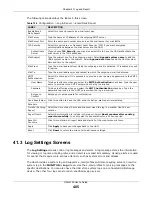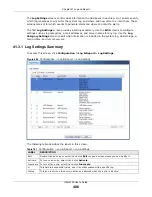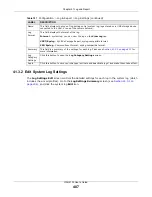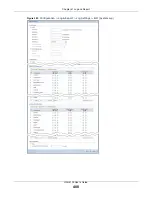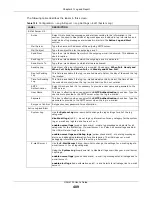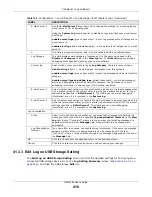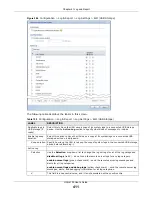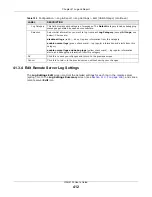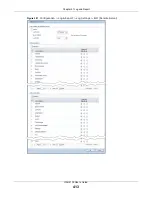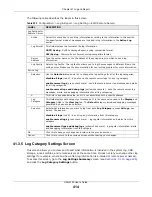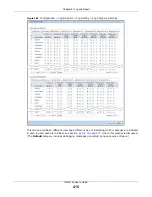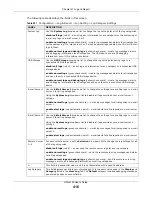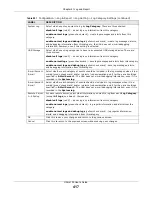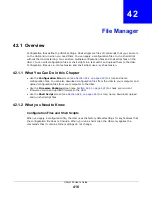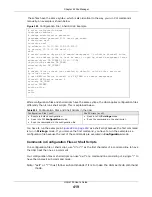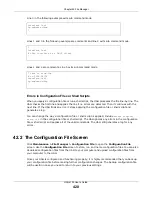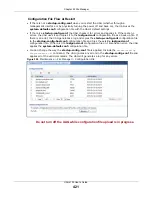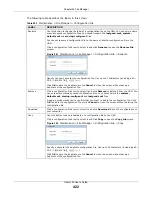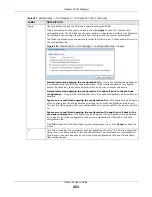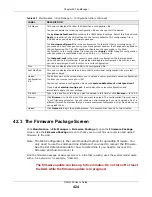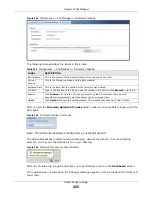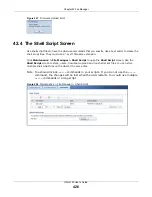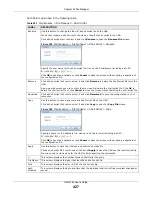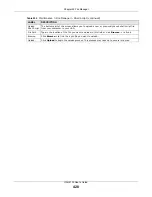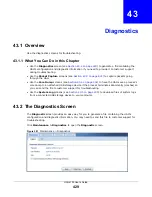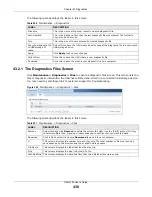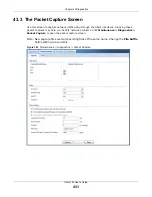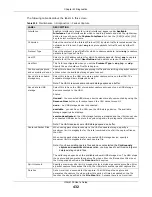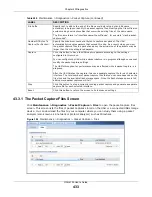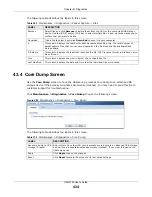
Chapter 42 File Manager
UAG4100 User’s Guide
419
These files have the same syntax, which is also identical to the way you run CLI commands
manually. An example is shown below.
While configuration files and shell scripts have the same syntax, the UAG applies configuration files
differently than it runs shell scripts. This is explained below.
You have to run the example in
as a shell script because the first command
is run in
Privilege
mode. If you remove the first command, you have to run the example as a
configuration file because the rest of the commands are executed in
Configuration
mode.
Comments in Configuration Files or Shell Scripts
In a configuration file or shell script, use “#” or “!” as the first character of a command line to have
the UAG treat the line as a comment.
Your configuration files or shell scripts can use “exit” or a command line consisting of a single “!” to
have the UAG exit sub command mode.
Note: “exit” or “!'” must follow sub commands if it is to make the UAG exit sub command
mode.
Figure 289
Configuration File / Shell Script: Example
# enter configuration mode
configure terminal
# change administrator password
username admin password 4321 user-type admin
# configure wan1
interface wan1
ip address 10.16.17.240 255.255.255.0
ip gateway 10.16.17.254 metric 1
exit
# create address objects for remote management / to-Device firewall rules
# use the address group in case we want to open up remote management later
address-object TW_SUBNET 10.16.37.0/24
object-group address TW_TEAM
address-object TW_SUBNET
exit
# enable Telnet access (not enabled by default, unlike other services)
ip telnet server
# open WAN-to-Device firewall for TW_TEAM for remote management
firewall WAN Device insert 4
sourceip TW_TEAM
service TELNET
action allow
exit
write
Table 202
Configuration Files and Shell Scripts in the UAG
Configuration Files (.conf)
Shell Scripts (.zysh)
•
Resets to default configuration.
•
Goes into CLI
Configuration
mode.
•
Runs the commands in the configuration file.
•
Goes into CLI
Privilege
mode.
•
Runs the commands in the shell script.

